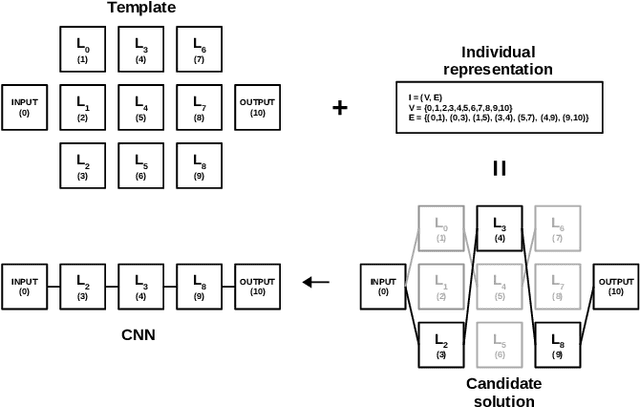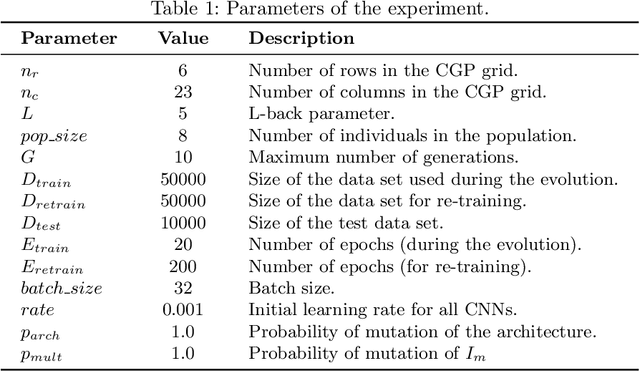Michal Pinos
ApproxDARTS: Differentiable Neural Architecture Search with Approximate Multipliers
Apr 08, 2024



Abstract:Integrating the principles of approximate computing into the design of hardware-aware deep neural networks (DNN) has led to DNNs implementations showing good output quality and highly optimized hardware parameters such as low latency or inference energy. In this work, we present ApproxDARTS, a neural architecture search (NAS) method enabling the popular differentiable neural architecture search method called DARTS to exploit approximate multipliers and thus reduce the power consumption of generated neural networks. We showed on the CIFAR-10 data set that the ApproxDARTS is able to perform a complete architecture search within less than $10$ GPU hours and produce competitive convolutional neural networks (CNN) containing approximate multipliers in convolutional layers. For example, ApproxDARTS created a CNN showing an energy consumption reduction of (a) $53.84\%$ in the arithmetic operations of the inference phase compared to the CNN utilizing the native $32$-bit floating-point multipliers and (b) $5.97\%$ compared to the CNN utilizing the exact $8$-bit fixed-point multipliers, in both cases with a negligible accuracy drop. Moreover, the ApproxDARTS is $2.3\times$ faster than a similar but evolutionary algorithm-based method called EvoApproxNAS.
Evolutionary Neural Architecture Search Supporting Approximate Multipliers
Jan 28, 2021



Abstract:There is a growing interest in automated neural architecture search (NAS) methods. They are employed to routinely deliver high-quality neural network architectures for various challenging data sets and reduce the designer's effort. The NAS methods utilizing multi-objective evolutionary algorithms are especially useful when the objective is not only to minimize the network error but also to minimize the number of parameters (weights) or power consumption of the inference phase. We propose a multi-objective NAS method based on Cartesian genetic programming for evolving convolutional neural networks (CNN). The method allows approximate operations to be used in CNNs to reduce the power consumption of a target hardware implementation. During the NAS process, a suitable CNN architecture is evolved together with approximate multipliers to deliver the best trade-offs between the accuracy, network size, and power consumption. The most suitable approximate multipliers are automatically selected from a library of approximate multipliers. Evolved CNNs are compared with common human-created CNNs of a similar complexity on the CIFAR-10 benchmark problem.
 Add to Chrome
Add to Chrome Add to Firefox
Add to Firefox Add to Edge
Add to Edge